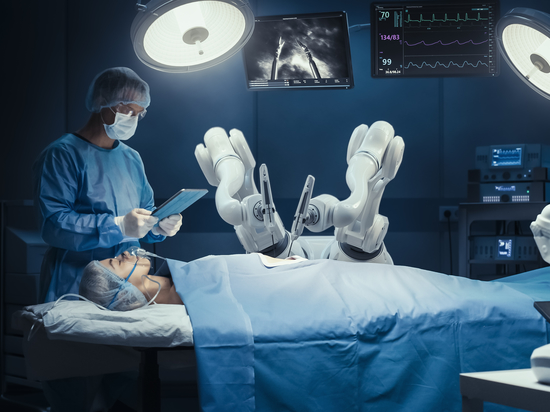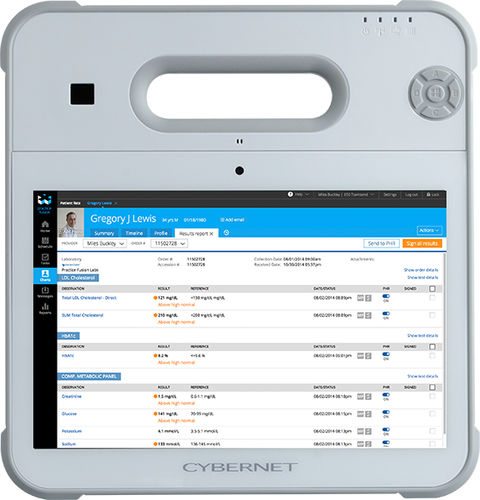
#Industry News
How Infotainment Systems Can Benefit Both Patients and Providers
Infotainment systems don’t just help patients stay occupied and happy; they can also help healthcare providers with their tasks and lighten their workloads.
Very few people actually look forward to a hospital stay. For most patients, it means prolonged pain and discomfort, confined to a bed and left with nothing to do while their body heals. Options for entertainment or distraction were limited to books they brought with them or a wall-mounted TV.
Modern computers and the Internet have given patients an alternative. Modern infotainment technology can not only occupy a patient's attention but also educate them on their condition and treatment. These same technologies can also give them control over the state of their bed or room, reducing their need for nurses or other hospital staff.
What is Bedside Infotainment?
A bedside infotainment system combines a computer, TV, phone, and nurse call button into a single device. Typically relying on a touchscreen as a user interface, these devices are easy for patients of all ages and demographics to use. Power-over-ethernet medical computers are ideal for this role, as they have low power requirements and are easy to install.
Entertainment Options
Through the touchscreen interface, patients can watch TV, browse the Internet, and even call friends and family from their hospital bed via platforms like Zoom or Discord. This lets patients receive the emotional support of their loved ones without them having to travel to the hospital, go through the process of signing in, and potentially catch an illness while they’re there.
Information Options
Along with entertainment, these same devices can also educate patients about their condition and treatment options. Hospitals can also implement calendar and scheduling apps to remind patients when they should take their medication, much like how a personal smartphone can.
Smart-Room Interfaces
Infotainment systems are also an excellent user interface for smart-room technologies. A patient can adjust the room's temperature, raise or lower blinds and curtains, and alter the configuration of their bed without having to get up and risk injury or call for a nurse.
Historically, these adjustments have required a registered nurse’s attention, distracting them from other tasks and adding to their workload. Empowering patients not only makes their stay at a hospital more comfortable but also lets staff focus on the most pressing tasks.
Infotainment Systems And Healthcare Providers
Infotainment systems can also be used by healthcare providers for their own purposes. By using an RFID badge or smart card, providers can access restricted functions such as EHRs and use the system as a medical panel PC.
What Do Infotainment Computers Require?
Like all equipment used in a hospital, infotainment computers need to be specialized for their environment. The most important features are:
IEC 60601 Certification
While it may be used primarily for entertainment, an infotainment system is still an electronic device in a medical setting. Therefore, it needs to meet specific safety requirements, the most important of which are IEC 60601-1 and 60601-1-2.
These certifications ensure that even when used in close proximity to other devices, the infotainment computer won’t disrupt or be disrupted by other devices.
IP65 Protection
While they may be primarily used for recreational purposes, infotainment systems are still computers being used in a healthcare setting and, therefore, must be frequently cleaned and disinfected.
This makes an IP65-rated front bezel critical for protecting the LCD screen and electronic components underneath. Without sealed protection, dust and liquids can enter the casing and damage the computer.
Security and Privacy Measures
If the infotainment system also doubles as a bedside medical computer, having the proper security and privacy features is critical. Under HIPAA regulations, any device that stores or accesses private health information must implement access control features like RFID tags or smart cards that prevent unauthorized individuals from viewing that information.
Privacy is another concern, especially in crowded hospital wards with potentially prying eyes. A privacy filter installed behind the monitor’s glass ensures that only the person currently using the infotainment system can view its contents.
Closing Thoughts
Modern infotainment systems make it easier to keep inpatients happy, comfortable, and in contact with their loved ones. With the right security and connectivity features, they can even benefit hospital staff by serving as a bedside medical computer.
If your healthcare group is looking for medical computers that can serve as infotainment consoles, contact the team at Cybernet Manufacturing. Our medical-grade tablets and computers can easily be installed in a patient’s room and are compatible with a full range of apps and programs. Several of our models can even draw power from Ethernet cables, simplifying installation.





